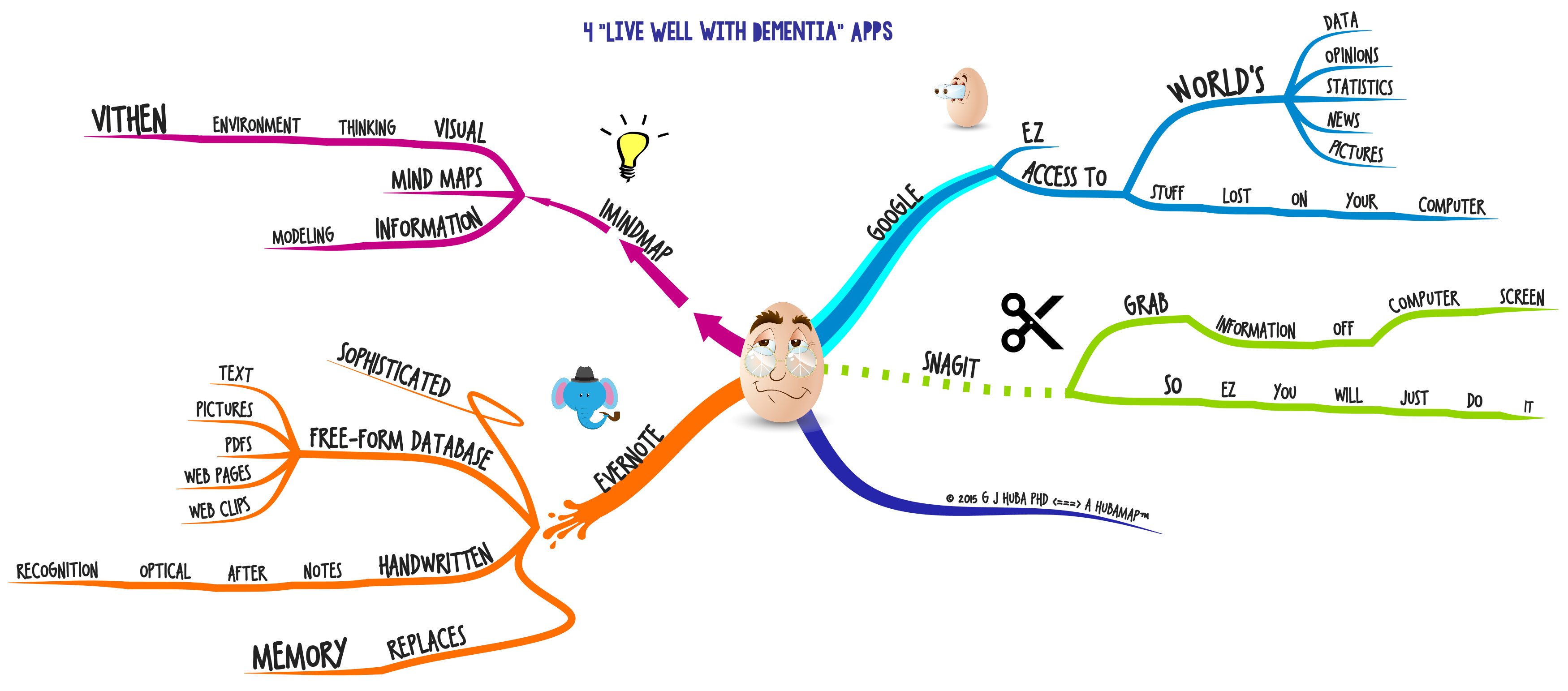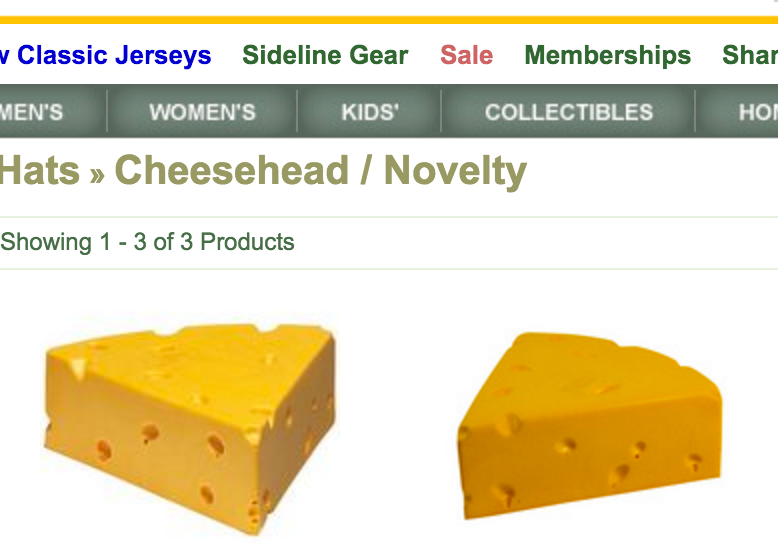
Click here for an index of all HITMM 2016 posts.
I would categorize the pioneering efforts of Tony Buzan and many others to introduce and popularize the method of mind mapping as Mind Mapping 1.0. While mind map program vendors, sellers of consulting and training services, and others sometimes get quite loud in arguing who was the “inventor” of the method, I see claims of who invented what to be primarily marketing ones similar to those used in advertising colas, laundry detergents, and personal hygiene products. The identification of the organization or individual most responsible for making the method practical and useful is much more important than the term “inventor.” It is very clear to me that Tony Buzan was the one who took many ideas about visual thinking, the primitive neuroscience of the day (1970s), creativity, brainstorming, and management and formed it into a coherent and useful model of “mind mapping.” Had he not, the majority of the other players in the field would not be following his suggestions and rules (or arguing vociferously against them) or frequently copying his computer program.

The parameterizations and resulting computer programs by ThinkBuzan, Topicscape, Mindjet, and others comprise Mind Mapping 2.0. Buzan’s ideas and those of many others were incorporated into efficient and accessible computer programs that opened the mind mapping methods to a far larger audience of students, managers, and others.The iMindMap program by Griffiths and his colleagues at Open Genius is by far the best of the lot. Over time, the best programs have evolved into more general visual thinking environments I term these VITHENs) which feature mind maps as the core element but allow the author to show supporting data on the map or as annotations. Annotations can be links, graphs, comments, citations, and other forms of information that support the map or add expert justifications. Technical improvements in these programs are still frequently introduced. I consider Mind Mapping 2.0 to have been more important than Mind Mapping 1.0, and the contributions of Griffiths to how visual thinking should look and be implemented to be seminal.

[As I saw it in 2012 and continue to view it in 2015] Mind Mapping 3.0 is the integration of computer-assisted mind mapping methods, artistic sensibility to enhance visualization, AND MOST IMPORTANTLY, substantive, creative, well-documented valid and reliable content of great importance.
Mind Mapping 3.0’s primary characteristic is that it emphasizes content within the mind map. Mind mapping has evolved from its start as a method which emphasized brainstorming, management observations, and business functions (calendars, timelines, responsibilities) into a much general form that permits the development of knowledge databases and models, communicates history and science, and can organize the rules of English for those learning the language.
Mind Mapping 4.0 goes far beyond Mind Mapping 3.0 as each map is created from the perspective of an expert both in the content area (such as dementia or memory or stress or the plays of Shakespeare or the development of the nuclear age) and the application of specific and unique styles of mind mapping to maximize the utility of the resulting mind maps.
The expert mind maps may then be turned into templates suitable for distribution to end users (such as healthcare providers, patients-clients, caregivers, managers, employees, educators, students, scholars, politicians, news reporters, engineers and hundreds of other end user groups. The key feature is that an expert is able to combine a high level of knowledge and expertise in the content area of the map with very advanced “formatting” methods (colors, fonts, organic or boxed styles, and others of format styles in the Buzan guidelines) using the very best combination of these for the subject matter, template users, objectives of the map, and for enhancing wanted outcomes and minimizing unwanted ones. Additionally, the expert needs to decide whether to use Buzan’s fairly standard and rigid rule of one word per branch in the mind map, Huba’s flexible, more valid judgment-based rule of one concept per branch, some combination of the two, or another innovative approach.Mind Mapping 4.0 is a highly accurate description of content (substantive) knowledge by an expert who also has the highest level of mind mapping expertise or collaborates in a team with an expert in mind mapping.
Does an “expert” in content matters need to have graduated from a specific degree program, taken a specific set of courses, had a certain number of hours of classroom or practicum hours, or obtained a specific professional license? I believe the answer to be ABSOLUTELY NOT. While formally educated professionals are typically content experts in some areas of specialization, this is not universally the case. Many people running around with doctoral-level training are not content experts in any area and many draw conclusions outside their areas of expertise. And certain topics (such as patient perceptions on disease or feelings or creative solutions to conflicts) are almost universally ignored by “advanced degree” content experts.In addition to the formally educated experts, there are many people who have become experts in various content areas through life experiences, self-teaching, on the job observations and inspirations, brainstorming, synthesizing the views of others, the experiences of disease and achievement, and personal research.
These are true experts. As was often said in earlier prehistoric times (the 1950s and 60s), they are graduates of the “School of Hard Knocks.” Among other famous graduates from this form of education is Bill Gates.In Mind Mapping 4.0, experts in some content area (a medical disease, mindfulness, best practices for management, the exploits of Henry the VIIIth, the history of caffeine addiction, the poor decisions of George W Bush, trends in high fashion, urban dictionaries, the characters of Star Wars, the jokes of Groucho Marx) use their knowledge, supporting data, research, synthesis, and creative insights to develop mind maps. With expertise in the possibilities of mind maps and their usage, in Mind Mapping 4.0, definitive content can be presented in mind maps that “bend” formal rules of mapping and present the best ways of formatting maps for the audience, type of information, intended actions, memory retention, creative insight, novelty, humor, and acceptance of new ideas, as well as unambiguous and easily understood communication.
In Mind Mapping 4.0, the presentation of new thinking and excellent information is enhanced and supported by the use of the “best” techniques of mind mapping tailored to the purposes for which the map was developed.Mind Mapping 4.0 should produce easily understood maps that can be translated into templates that can be widely used by others (as some examples consider such content as medical symptoms and disease screening, pharmaceuticals, recommended treatments, cautions, coming trends, and research findings in the areas of healthcare where I work).
Some characteristics and concepts of Mind Mapping 4.0.Click the mind map to expand it.

The following presentation presents one section of the mind map at a time. If you would like to go through the presentation at your own speed, click the stop button in the presentation and use the arrow keys to navigate
This slideshow requires JavaScript.

Like this:
Like Loading...































